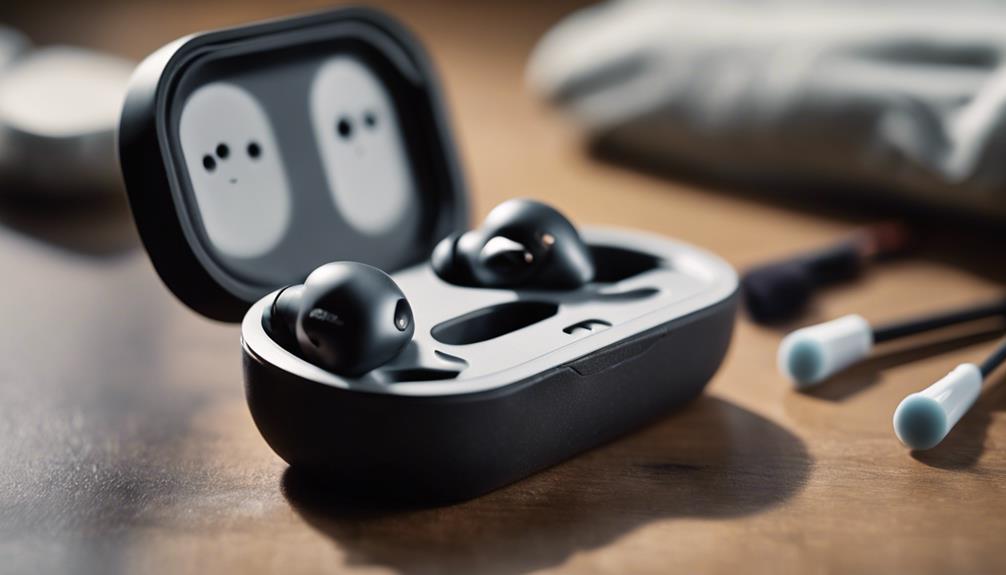
In an era where security and surveillance technologies are evolving at a rapid pace, small motion sensor cameras have emerged as a versatile solution for a range of applications, from home security to wildlife monitoring. These compact devices, equipped with advanced motion detection capabilities, enable users to capture high-quality video footage without the bulk of traditional cameras. Ideal for both indoor and outdoor use, small motion sensor cameras offer a discreet yet effective means of enhancing safety and observing activity in real-time. This article will explore the features, benefits, and potential applications of small motion sensor cameras, as well as considerations for anyone interested in integrating them into their security infrastructure.
Overview of Small Motion Sensor Cameras
Small motion sensor cameras have revolutionized the way we monitor our surroundings, blending advanced technology with compact design. These cameras are typically equipped with infrared sensors that detect movement, triggering automatic recording at the precise moment an event occurs. This feature not only conserves storage space but also ensures that important footage is captured without the need for constant manual monitoring. The sleek and unobtrusive designs of these devices make them easy to install in any environment, from home security systems to wildlife monitoring setups.
Some prominent features of small motion sensor cameras include:
- High-resolution imaging: Many models now offer HD or even 4K resolution for clear visuals.
- Night vision capabilities: Infrared technology allows for clear recordings in low light conditions.
- Wireless connectivity: Many cameras offer Wi-Fi or Bluetooth options, enabling remote viewing via smartphone apps.
- Customizable sensitivity: Users can adjust the motion detection settings to minimize false alerts.
To better understand the market options, consider the following table that summarizes common specifications:
| Camera Model | Resolution | Night Vision | Connectivity |
|---|---|---|---|
| Model A | 1080p | Yes | Wi-Fi |
| Model B | 4K | Yes | Wi-Fi, Bluetooth |
| Model C | 720p | No | Wi-Fi |
Key Features to Consider When Choosing a Small Motion Sensor Camera
When selecting a small motion sensor camera, several key features can enhance both functionality and user experience. First, consider the camera’s resolution. Higher resolutions provide clearer images, which are essential for identifying people and objects. Next, evaluate the field of view, as a wider angle allows the camera to cover more area, reducing the number of cameras needed for comprehensive monitoring. Additionally, check for night vision capability, which enables the camera to capture clear footage even in low-light environments, ensuring 24/7 surveillance.
Another critical aspect is the camera’s motion detection sensitivity. A more sensitive sensor can help minimize false alarms caused by small animals or moving leaves. Furthermore, the availability of cloud storage is crucial, as it allows users to save footage securely and access it from anywhere. Lastly, ensure the camera has wireless connectivity options like Wi-Fi or Bluetooth for a seamless setup and real-time notifications. Here’s a concise table summarizing these features:
| Feature | Importance |
|---|---|
| Resolution | Clarity for identification |
| Field of View | Wider coverage area |
| Night Vision | Visibility in darkness |
| Motion Detection Sensitivity | Reduces false alarms |
| Cloud Storage | Safe, remote access |
| Wireless Connectivity | Easy setup & notifications |
Benefits of Using Small Motion Sensor Cameras for Home Security
Small motion sensor cameras are a game-changer for home security, offering numerous advantages that enhance both safety and convenience. One of the key benefits is their discreet design; these compact devices can be easily placed around your home without drawing attention to themselves. This inconspicuousness can deter potential intruders, as they may be unaware of being monitored. Moreover, their energy-efficient operation means they rely on battery power or low-energy usage, making them a cost-effective solution compared to traditional surveillance systems. With their state-of-the-art motion detection technology, users receive alerts only when movement is detected, minimizing false alarms and ensuring that you only react to genuine threats.
Another significant advantage is the flexibility that these cameras offer in terms of placement and coverage. They can be installed in various locations—be it indoors near entry points or outdoors for perimeter security—allowing home owners to customize their security setup to fit their specific needs. Furthermore, many small motion sensor cameras come with cloud storage options, enabling users to access and review footage from their smartphones or computers, enhancing accessibility and peace of mind. This feature becomes especially crucial during emergencies, as users can swiftly share video evidence with authorities. The blend of affordability, ease of use, and cutting-edge technology makes these devices an excellent addition to any home security strategy.
Installation and Setup Tips for Optimal Performance
To ensure your small motion sensor camera operates at its best, start with careful placement. Position the camera at an optimal height of 6 to 8 feet, ideally overlooking areas with the most movement, such as entryways or driveways. It’s vital to avoid obstructions that could block the sensor’s view. Remember to consider the camera’s field of view; aligning it with common pathways will enhance detection accuracy. Additionally, check the surrounding lighting conditions, as extreme brightness or darkness can impair sensor performance. Regularly testing the camera’s detection range after installation can help you fine-tune its position for ideal coverage.
Next, be mindful of your camera’s settings to maximize efficiency. Configure the motion sensitivity settings according to your environment; higher sensitivity is preferable in quieter areas while in busier locations, a lower sensitivity may prevent false alarms. Additionally, review the recording schedule. Tailoring your camera to activate during vulnerable hours can save storage space and reduce the frequency of unnecessary footage. Implementing a backup power source ensures your camera remains operational during outages. Lastly, frequent software updates are crucial for maintaining security and enhancing performance. You can typically find these in the Settings menu of your camera’s app.
Common Use Cases for Small Motion Sensor Cameras
Small motion sensor cameras have become indispensable tools in various settings due to their discreet size and efficient functionality. One common use is in home security systems, where they can be easily installed in entry points like doorways and windows. Their ability to detect motion and capture high-definition footage allows homeowners to monitor activities in real-time. Furthermore, these cameras can be integrated with smart home devices, enabling notifications to be sent directly to the user’s phone when movement is detected. Another popular application is in wildlife monitoring, allowing researchers and enthusiasts to observe animals in their natural habitat without human intrusion.
In addition to security and wildlife observation, these cameras serve various commercial purposes. Retailers often deploy small motion sensor cameras to analyze customer behavior and foot traffic within their stores. This data helps optimize store layouts and enhance marketing strategies. Similarly, businesses in the logistics sector utilize these cameras for monitoring packages and preventing theft during shipping. Below is a simple table illustrating several key use cases of small motion sensor cameras:
| Use Case | Description |
|---|---|
| Home Security | Monitor entry points in real-time for safety alerts. |
| Wildlife Monitoring | Capture images and videos of wildlife discreetly. |
| Retail Analytics | Track customer movement and shopping patterns. |
| Logistics Monitoring | Prevent theft and ensure package integrity during transit. |
Maintenance and Care for Longevity and Efficiency
To ensure your small motion sensor camera operates at peak efficiency for an extended period, regular maintenance is key. Start by keeping the camera clean; dust and debris can interfere with the sensor’s performance. Use a soft, lint-free cloth to gently wipe the lens and outer casing. Additionally, check for any obstructions in the field of view that could impede motion detection. For outdoor cameras, periodically inspect seals and gaskets to avoid moisture damage, which can significantly impact longevity.
Battery life is another critical aspect of maintenance. To extend operational time, consider the following tips:
- Adjust motion sensitivity settings to reduce unnecessary activity, thus conserving battery.
- Turn off features not in use, such as sound detection or continuous recording.
- Regularly update firmware to ensure the camera has the latest security enhancements and energy management protocols.
Q&A
Q&A: Small Motion Sensor Cameras
Q1: What is a small motion sensor camera?
A1: A small motion sensor camera is a compact surveillance device equipped with a motion detection feature. It can capture video or images when it detects movement within its field of view. These cameras are often used for security purposes, monitoring pets, or keeping an eye on children.
Q2: How does motion detection work in these cameras?
A2: Motion detection in small cameras typically relies on passive infrared sensors or pixel change technology. Passive infrared sensors detect changes in heat signatures, while pixel change technology analyzes the video feed for changes in the picture. When movement is detected, the camera activates to record or capture images.
Q3: What are the typical features of small motion sensor cameras?
A3: Common features include high-definition video recording, night vision, two-way audio, cloud storage, and mobile notifications. Many cameras also offer remote access through smartphone apps, allowing users to view real-time footage from anywhere.
Q4: Where can small motion sensor cameras be used?
A4: These cameras are versatile and can be used in a variety of settings, including homes, offices, retail spaces, and outdoor environments. They are often positioned to monitor entry points, parking lots, or interiors for added security.
Q5: Are small motion sensor cameras easy to install?
A5: Most small motion sensor cameras are designed for user-friendly installation. Many models can be mounted using adhesive or screws, and some are wireless, allowing for more flexible placement. Most manufacturers provide detailed instructions for setup, making it accessible for non-technical users.
Q6: What are the advantages of using small motion sensor cameras?
A6: The advantages include enhanced security through real-time monitoring, deterrence of potential intruders, the ability to capture crucial evidence, and convenience in managing home safety remotely. Their compact size also allows for discreet placement without being obtrusive.
Q7: Are there any privacy concerns associated with these cameras?
A7: Yes, there are privacy concerns regarding the use of motion sensor cameras, especially in residential areas. Users must be mindful of legal regulations regarding surveillance, ensure they are not infringing on others’ privacy, and consider settings that limit the camera’s view to their property.
Q8: What should consumers consider before purchasing a small motion sensor camera?
A8: Consumers should consider factors such as the camera’s resolution, field of view, storage options, connectivity (Wi-Fi or wired), ease of installation, app functionality, and whether the device includes features like night vision and audio capabilities. It’s also essential to research the brand’s reputation for product quality and customer service.
Q9: Can small motion sensor cameras be integrated into smart home systems?
A9: Yes, many small motion sensor cameras are designed to integrate into smart home ecosystems. They can often connect with home automation systems and other devices like smart lights and alarms, allowing for a coordinated security approach and enhanced functionality.
Q10: What is the general price range for small motion sensor cameras?
A10: The price for small motion sensor cameras can vary significantly based on features and brand. Basic models typically start around $50, while more advanced options with higher resolutions, cloud storage, and additional features can range from $100 to $300 or more.
To Wrap It Up
small motion sensor cameras represent a versatile and valuable tool for a variety of applications, from home security to wildlife observation. Their compact design, ease of installation, and advanced technology make them an ideal choice for individuals seeking reliable surveillance solutions. As the technology continues to evolve, these cameras are becoming increasingly accessible and affordable, providing users with enhanced features such as high-definition recording, remote monitoring capabilities, and improved motion detection. Whether you’re looking to secure your property, monitor your pets, or capture nature’s wonders, small motion sensor cameras offer a practical and effective option that meets diverse needs. As you consider incorporating this technology into your daily life, it’s essential to assess your specific requirements and choose a model that aligns with your goals for functionality, ease of use, and value.





